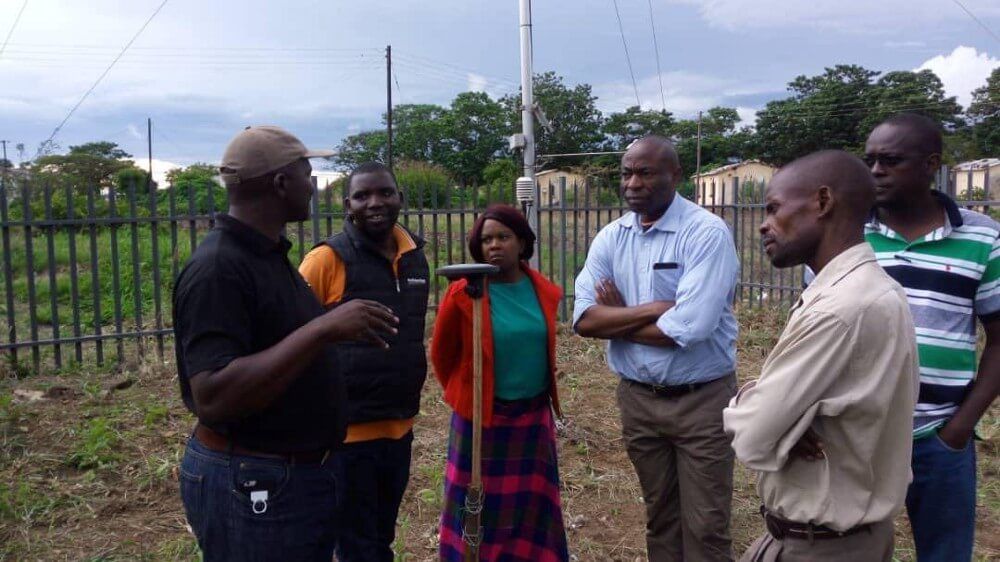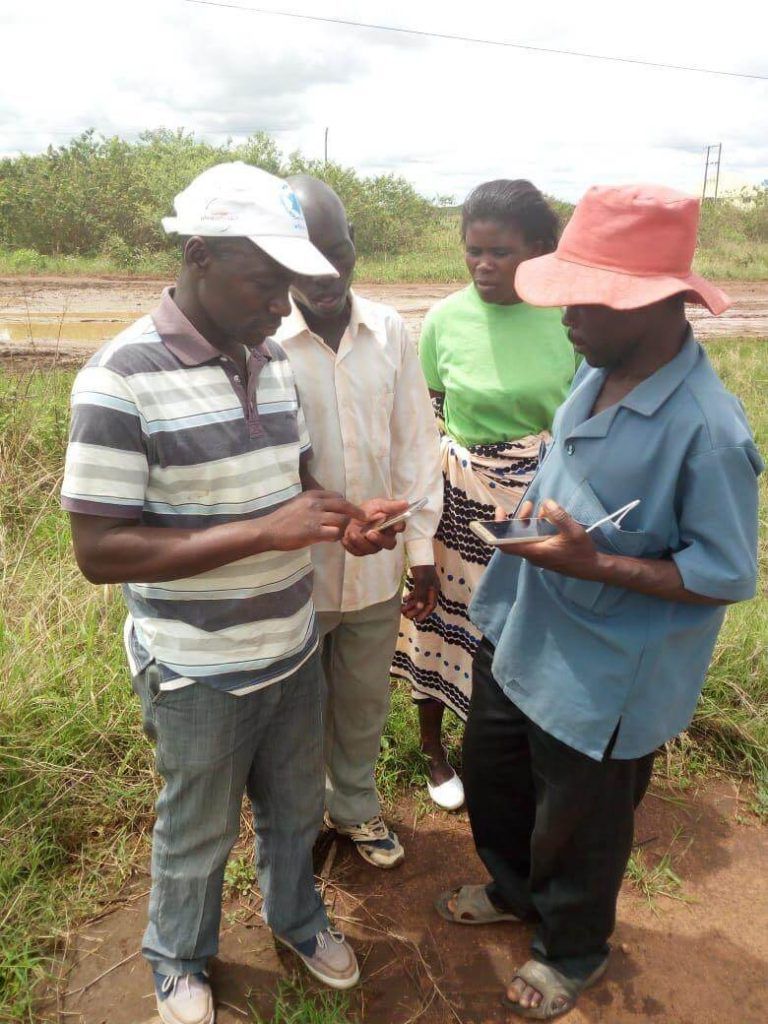Towards A More ‘Digital-Dense’ Smallholder Farmer
Solidaridad is a nearly 50 year-old global network that focuses on sustainable production in 13 commodity groups, 11 of which are in agriculture. Based in nine regional hubs over 40 countries, they work with small- and medium-scale farmers growing crops such as sugarcane, fruit & vegetables, cotton, soybeans, and wheat & barley. These farmers are embedded in tight supply chains, and recognize the advantage to tracking all quantifiable aspects of their production, not only for their own edification, but for downstream buyers and consumers seeking demonstrable quality through traceability.
Arable’s Jess Bollinger spoke with Mandla Nkomo, Managing Director of Solidaridad Southern Africa, about digital agriculture’s role in empowering small-scale farmers to build their knowledge base and make informed, data-driven decisions about their livelihoods and the goods they produce.
Arable Labs: Mandla, before working at Solidaridad, you worked with farmers at TechnoServe. Can you tell us more about your background, and how long you’ve worked in agriculture?
Mandla Nkomo: I am very passionate about two things: getting agriculture production right, and making sure we are creating opportunities for smallholder farmers to participate in global value chains. In other words, making it inclusive. I am actually a biochemist by training, with no formal training in agriculture, but agriculture has always been a passion. I started out working in a laboratory at an agriculture company, which allowed me to do both. When I transferred to Technoserve, I already knew, practically speaking, how integration works, and what the end user should do in terms of packaging the connections. Technoserve allowed people to do it at scale, across a number of companies and a number of value chains. Now I’m doing the same at Solidaridad, with a sharper focus on sustainability and value chains, and how digital can be leveraged.
AL: Can you give us some background on the goals of Solidaridad?
MN: Solidaridad has been around for 50 years, transitioning quite a bit from supporting activist movements in Central America towards supply chains in commodities. Looking at coffee, cocoa, and sugarcane, these are all big, global supply chains. We strongly feel that the current production system in the world is unsustainable; if we are going to deliver food for 9 billion people, things cannot go on business-as-usual. When we look at supply chains, we look at everything we can leverage, focusing on the core pillars of sustainability and inclusivity. They are important in defining everything about how we interact with that sector.
AL: Textiles are outside core agricultural commodities, but are included in Solidaridad’s mandate. Why is that?
MN:T extiles use a large amount of water and energy; we can make these more efficient. Same with the gold sector and mining. If we participate in creating standard operating procedures, we can add value to making those sectors sustainable.
AL: How do you scale this efficiency globally?
MN: When we did our MASP [Multi Annual Strategic Plan], one of the things that became very clear was that we needed to have a clear digital strategy, or we would not be in existence. This allowed us to bring in Shungu Kanyemba, Director of IT at Solidaridad, helping us integrate digital tools. I don’t have to preach this to you: digital is a great equalizer. It makes the world flat, and shines the spotlight on areas often left out. Where we previously had to rely on third- and fourth-hand information, now we have direct information.
Mandla Nkomo (left) compares the Arable Mark to traditional weather stations in conversation with government extension officers in Katete, Zambia.
It’s very clear to us that it doesn’t matter which vertical you are looking at: everyone is adapting to a digitally enabled way of doing business. The investment we are making in terms of hardware, partnerships, and software — when you and I first met, we talked about how to make complex technology available at the bottom of the pyramid where it is going to have the greatest impact in changing things.
AL: Where do you see change happening first, and how?
MN: I’m glad you asked that. If you look at the value chain from start to finish, almost every activity lends itself to improvement using technology. We’ve been busy trying to integrate a number of tools to make a ‘digital-dense’ smallholder farmer. We want to know stuff about a smallholder farmer that he doesn’t know about himself. Worm’s-eye stuff. Stuff below the surface: nutrients in the soil, humidity in the soil. Previously this wasn’t possible, or if it was possible, it was very inefficient.
AL: Where do you see room for the most improvement through technology?
MN: A good example of this is soil testing, usually the domain of government institutions. If you are a farmer of any size, you are going to take a sample and ship it a couple hundred miles to some unknown place, where they do the test and in six months you get your results. Most input support programs are not based on fundamentals like how many nutrients are in the soil; it’s just a generic fertilizer recommendation. This leads to underapplying, overapplying, or applying fertilizer that never gets in the crop — which is expensive! Now, we have the ability to test in 15 minutes, and to let the farmer know the status of his soil composition and pH balance. We go a step further and make crop recommendations best suitable for his soil based on the results. If the farmer insists on a particular crop, we will give recommendations on the type and quantity of fertilizer necessary for that particular crop. This enables farmers to make data-informed decisions at the planning stage, ultimately impacting the quality and quantity of their yield. We are working with 40,000–50,000 farmers in South Africa, testing the soil and ensuring that they all have access to this data.
AL: That’s a great example of innovation as an empowering, real-time decision tool, rather than a mechanism that keeps farmers dependent on technology to interpret what is happening in front of them.
MN: Let’s talk about the Arable Mark we posted on Twitter. This Mark is located in rural Zambia, next to a weather station contraption that requires 10 square meters to set up and has all types of instructions. Meanwhile, the little Arable Mark is doing all types of data calculation. I asked the site operator: When is the last time you got data from the weather station at this site? And he said they’ve never seen the data from that station. But with the Arable Mark, I could go online and immediately see the data from the past 24 hours. He was just blown away. Using open source satellite technology, we now have the tools to provide deep insight to help decision-making at the smallholder farmer level.
AL: That’s especially important in Africa.
MN: Yields on the African continent are still quite sub-optimal; we can change that with what we’ve got in our hands right now. If we could deploy 100,000 Marks in South Africa, we would have the most comprehensive view of weather in South Africa. If that information is shared with extension officers, we would have farmers planting at the right time. If we had information about plant health and disease incidence earlier, we could act. We wouldn’t have to wait for an extension officer to get on a bike and ride out to check on the field. We have the tools now — it’s on us to use them.
AL: Tell us what you think the next generation of farming looks like. Who are the key players besides the farmers themselves, and what are their roles?
MN: Solidaridad is building strategic partnerships with knowledge institutes in South Africa, such as the Council for Scientific and Industrial Research. We work to create a pathway to allow their technologies to be tested in the field. Also, working with Zambia Agriculture Research Institute, we have offered ourselves as a conduit for not just digital but biotech and breeding technology to reach the field. Secondly, we are creating internships for students in agricultural colleges and institutions to work with us alongside smallholder farmers. They read textbooks about how agriculture is done in the US, and work with us in integrating technology in the field.
Students in rural Mozambique teaching farmers how to navigate mobile apps. (courtesy Mandla Nkomo)
AL: Is this part of your rural ‘agropreneurship’ model?
MN:This model is the delivery method for all these technologies. Whether it’s improved seeds or deploying Arable Marks, you need a purveyor. We see this as a great opportunity to connect young people, who are already digitally fluent, both financially and socially. Just look at pictures from the field where Shungu’s team is training farmers on some of the apps that we have built for them.
AL: From the buyer’s standpoint, what are the biggest risks in purchasing products from smallholder farmers? How does digital agriculture help to reduce those risks?
MN: For me this is where it’s quite exciting. We’ve got one of the big food processing companies in South Africa buying $1Bn of commodities. They can do all the planning in the world, but they are always let down by the lack of information from growers. If the crop is going to be late, it impacts how they set up their processing plant and logistics. They don’t know until it’s too late. They were very clear to us that the ability to use independently verifiable information makes a huge difference to them. They want to manage their portfolio of suppliers using soil information, Arable Mark data, and farmer input. When we add in possibilities with the insurers and bankers, it becomes even more exciting. We are running a model with the Marks in Mozambique with an agro dealer selling seed, providing both the dealer and insurer weather data that validates Sentinel data. Instead of having general insurance, we have precision insurance. Currently, insurance will cover people within 4-5 microclimates receiving the same level of insurance, but they are not experiencing the same loss. The Arable Marks provide more specific information, allowing them to have better data and greater efficiency in the insurance system.
AL: Solidaridad is a global network. What has your experience been in the Southern Africa region?
MN: We’ve got a central office in Johannesburg, then have satellite offices with field staff that provide field support in Malawi, Zambia and Mozambique. We are driven by this one thing: the issues we are trying to solve are ancient. I spent time in a part of Zambia where there is massive deforestation because people harvest the trees to manufacture charcoal, which they then sell in the city for people needing energy. This is not the type of problem you can solve slowly: it’s urgent. Guess what one of the drivers is: agriculture is not paying farmers well, because their yields are sub-economic. At the basic level, they are applying fertilizer while not knowing what the soil needs; they don’t know the rainfall or the proper planting dates. The longer it takes to digitally enable these farmers, the longer we are going to have these deforestation issues. It’s not a ‘nice to have’ to play around with these Marks. It’s urgent. We can see the potential danger if agriculture does not change in Africa.

